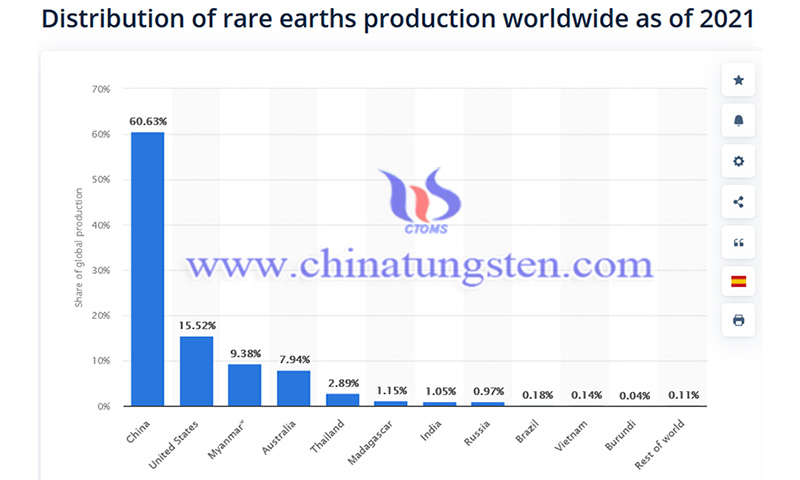Rare Earth Elements Are Not Rare
- Details
- Category: Tungsten's News
- Published on Wednesday, 27 April 2022 11:49
China is a major producer of rare earth elements (REEs), with 60% of the world's supply, and its share of production used to be around 95%, but after the rise in rare earth prices in 2009, other countries, including Australia, which is the fourth largest producer in the world, accounting for 8% of REE production, started mining REEs.
Last month, Australian Prime Minister Scott Morrison announced that Australian taxpayers would fund a $30 million rare earths separation facility near Aileron in the Northern Territory. Scott Morrison announced that Australian taxpayers will contribute $30 million to Arafura Resources to build a rare earth elements separation facility near Aileron in the Northern Territory. This is an early step in a plan to develop a rare earth element mining and refining capacity of about 200,000 tons per year, at a cost of about $1.4 billion.

The main difficulty, however, is finding a high enough concentration of rare earths worth mining, and although South Australia has far more rare earth element deposits than the rest of the country combined, so far no one has found what they consider to be worth mining.
Rare earth permanent magnets made from rare earth elements (REEs) provide us with cheaper, lighter, and more efficient generators and motors for wind turbines and electric cars. REEs are not very reactive and do not easily form crystals, so they are often difficult to concentrate and purify, which is why rare earths are also known as lanthanides, a Greek word meaning "to lie hidden".
rare earth elements hold a wide range of uses, including important applications in permanent magnets. The most often used REEs to make magnets are neodymium: the primary REE used to make permanent magnets; dysprosium could replace about 5% of neodymium and improve durability; praseodymium can replace small amounts of neodymium in magnets; dysprosium could increase the temperature at which magnets are used and improve durability; terbium owns similar effects with dysprosium. Samarium oxide could combine cobalt to form a magnet, while it is not as powerful as neodymium magnets.
Rare earths in wind turbines. Most wind turbines use electromagnets, but increasingly they are driven directly with permanent magnets, which make for lighter generators, and wind turbines often sit atop a long steel tube to which huge blades are attached. Lighter weight means less material is needed for the foundation and steel tower, thus reducing costs.

Rare earth elements for electric vehicles. Rare earths make the motors of electric vehicles lighter and thus more energy-efficient, eliminating the need to charge electromagnetic machines, and the efficiency of the motors can be increased by several percentage points.
- Rare Earth Manufacturer & Supplier, Chinatungsten Online: www.chinatungsten.com
- Tungsten News & Prices of China Tungsten Industry Association: www.ctia.com.cn
- Molybdenum News & Price: news.molybdenum.com.cn
- Tel.: 86 592 5129696; Fax: 86 592 5129797; Email: sales@chinatungsten.com



 sales@chinatungsten.com
sales@chinatungsten.com